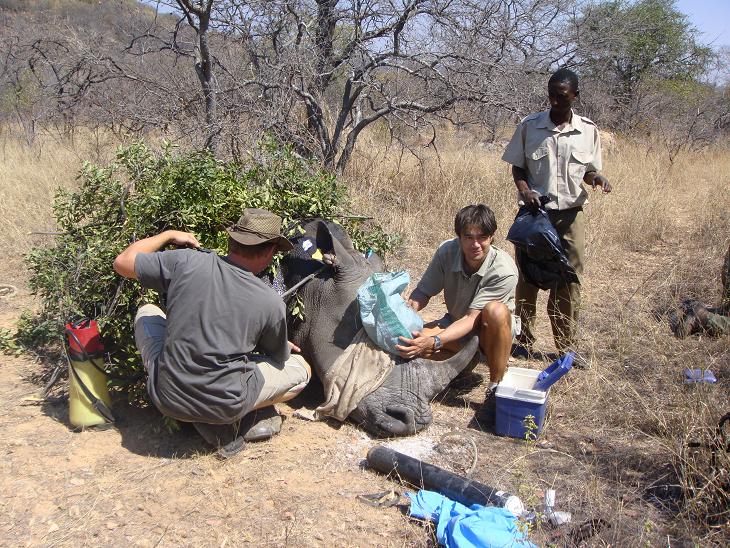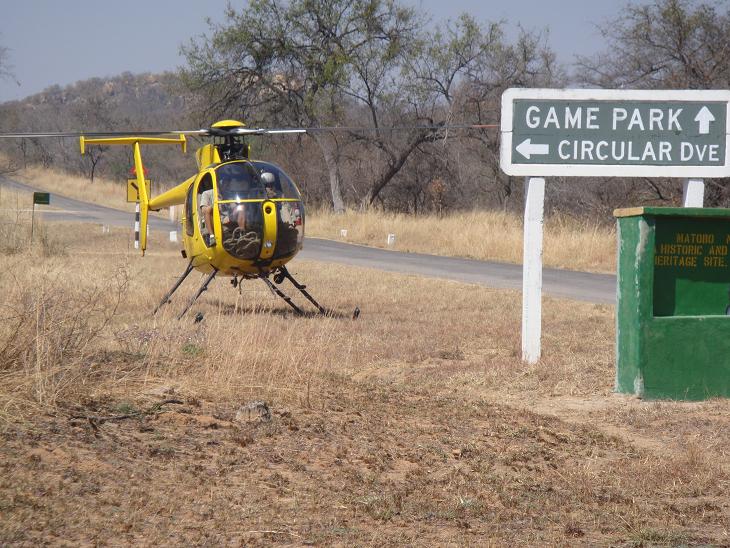African Rhino Conservation Project

Participate in conservation efforts designed to help save the dwindling black and white rhino populations in Zimbabwe.
Project Locations: Lake Chivero National Park, 50km from Harare city centre; Chipinge National Park in the Eastern Highlands; Kyle Recreational Park in Masvingo and possible involvement in dehorning operations in any of the other National Parks’ Intensive Protection Zones.
Project Age Limit: Minimum 18 years, Maximum age dependent on participant’s health. This is physical work and a certain degree of fitness is required.
Project Highlights:
- Be one of the privileged few in the world to not only see white rhino, but have the thrill of working with them.
- Work with wildlife vets dehorning, ear notching or trans-locating rhino.
- Help monitor the rhino by tracking them and observing them up close, or helping decipher footage from our camera traps.
- The rhino are in game parks with a good variety of other wildlife species to enjoy.
- Help National Park rangers with continued monitoring of the rhino population and anti-poaching operations.
Further Information on AWARE’s Rhino Conservation Projects:
Southern Africa’s rhino population is currently under enormous threat from poaching. Zimbabwe’s rhino population is estimated to be about 700 animals which includes roughly 300 white rhino and 400 black rhino. Rhino are poached for their horns which is made up of keratin (the same material that makes up your fingernails or hair), which is used as an anti-inflammatory ingredient in Chinese traditional medicine. The Parks and Wildlife Management Authority (PWMA) are struggling to contain this scourge under challenging economic circumstances, because inadequate resources are available for anti-poaching, ranger training and rhino monitoring activities.
AWARE believes a holistic approach is necessary for rhino conservation. This includes comprehensive dehorning of ALL rhinos in an area. On occasion, dehorned rhino have been poached. We feel this is much more likely to happen if there is a mixture of horned and dehorned rhino in an area (or, of course, if all the rhino have horns). A poacher cannot tell from tracks whether a rhino is dehorned or not. If he is tracking a dehorned rhino he may kill that rhino if he gets it visual so that he does not have to waste time tracking the same animal the following day. However if he knows that all the rhino in an area have been dehorned, the risk of potentially getting caught killing a rhino for a horn stub remnant starts to far outweigh the benefit as the profit is hugely reduced. In 2010 AWARE vets were involved in a Marwell Zimbabwe Trust funded project to dehorn 72 rhino in various parts of the country.
Monitoring is crucial to determine how rhino populations are faring. Monitoring is normally done by trained monitors (usually rangers) who carefully approach the rhino to make drawings of identification features such as ear patterns or horn shapes. Ideally, individual rhinos should be sighted on a regular basis to ensure that they are still alive, or to alert rangers to start searching for a carcass. AWARE assisted Parks with monitoring of numbers at Lake Chivero in 2010.
AWARE feels that in most instances in Zimbabwean National Parks, horn implants (which allow the rhino to be tracked from a distance of several kilometres with telemetry receivers) are unsuitable, as the horn has to be left on the animal to hold the implant, and the implant frequency can all too easily fall into the wrong hands which makes it easier for a poacher to track a rhino. When most rangers are earning less than $250 a month, and the price of rhino horn is worth more than gold per kg, it is not difficult to understand the temptation to help a poacher.
In certain types of terrain where water holes are limited and rhino pathways are well utilised, camera traps are an effective way to monitor a population. AWARE will be setting up the first of its camera trap projects this year.
Ranger training is perhaps by far the most critical tool for rhino conservation. As Africa undergoes urbanisation, new generations of rangers tend not to be very bush-savvy, and without knowledge, many of them are uncomfortable spending time patrolling in the bush. Inadequate weaponry practice is also something we have come across, so rangers often lack the confidence to engage armed poachers (who often have a military background themselves). In 2010 AWARE started assisting PWMA by running 2 ranger training courses in Chipinge National Park led by Pete Clemence, ex-military Grade A Tracking Instructor, whose knowledge of the bush (and warfare tactics) are second to none. See our Ranger Training Programme outline for further details.
Project Typical Schedule:
Orientation Day: An intensive introduction to rhino conservation will be given in Harare, including familiarisation with all equipment, protocols and safety procedures and lectures on rhino identification for monitoring purposes.
Immobilisation days: (For logistical reasons these will be clustered over a period of a week to ten days.)
- Rise before dawn in order to get to the Park just after dawn.
- Check and double check all equipment. This will include radios and batteries, pulse oximeters, chainsaws, oxygen cylinders, water sprayers, marker paint and kit bags.
- Light breakfast.
- (Usually) wait for individual rhino sightings to be reported by rangers.
- This is followed by (usually) helicopter darting of the rhino by the vet.
- Help with positioning and monitoring of the immobilised rhino whilst the vet dehorns, ear notches, microchips and samples the animal. Keep the rhino cool by spraying him/her with a fine water spray. Photograph the rhinos’ notches for identification. Then retreat to safety whilst the vet administers the reversal drug.
- Repeat the same process throughout the day if other animals become available.
- A packed lunch will be provided on these days.
- In the evening, help to compile data collected on the animals.
- Help with processing of blood and tissue samples back in Harare.
Monitoring days:
- Rise at dawn.
- Light breakfast.
- Proceed to the park for morning and evening patrols to be conducted over several hours each. Patrols may be on foot, horseback or in a vehicle. Photograph and try to identify any rhinos that are seen.
- Help track the selected implanted rhinos by telemetry if applicable.
- Remove any snares that are found in the bush (foot patrols).
- Help with fence repair or any other ranger jobs if applicable.
- A packed lunch will be provided.
- Help set camera traps. Help retrieve and upload data from the camera traps if applicable.
Trans-location days: (NB. This will be a relatively rare occurrence.)
- Rise at dawn and help with rhino immobilisation as above.
- Help load the rhino into a crate.
- Travel with the white rhino and vet to ensure the rhino arrives safely at its destination.
- Offload the rhino into new bomas.
- Help monitor the animal for the first few days in its new environment.
Project Accommodation:
This will normally be in National Parks chalet type accommodation, but be prepared to camp if necessary.
Project Travel Nearby:
Being on rhino ops is one of the best ways to visit National Parks in Zimbabwe since you will likely get the chance to view the park from a helicopter. Hwange – Sinamatella and Main Camp are the ultimate big 5 wild Africa destinations; Matopos and Chipinge are fascinating from a landscape point of view and Matusadona on Lake Kariba is simply stunning.
Volunteer comments:
‘I can definitely say that this is the most exciting wildlife veterinary work to be involved in.’ Anton Newall.
